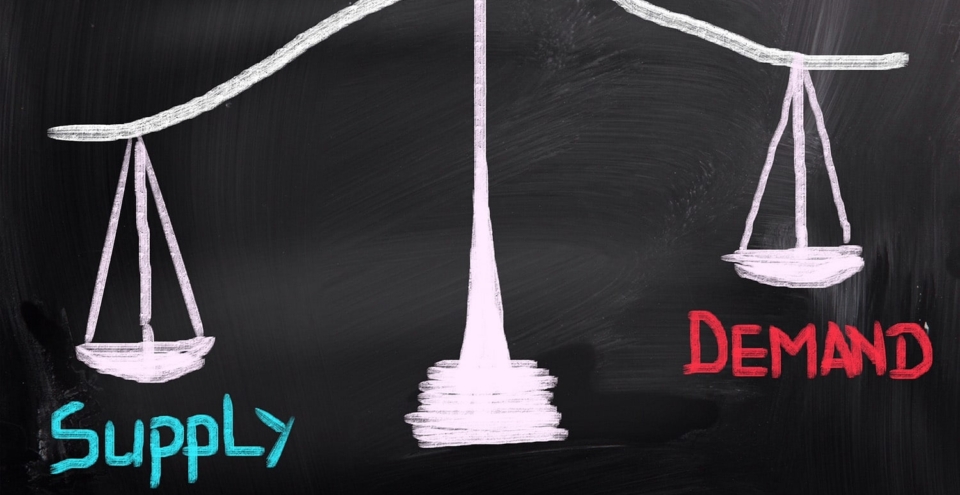
Imbalance market of supply and demand
The imbalance market offers a world of opportunities for those who respond intelligently to the vagaries of electricity supply and demand. Whether you are a large energy producer, a household with solar panels or an aggregator (market party). This market lets you make a profit by participating in a stable electricity grid.
A market to welcome profits
In times of fluctuations, parties can adjust their energy consumption and production and profit handsomely from them. In short: everyone can contribute and earn from the fluctuations in the market.

Benefiting flexibly
The imbalance market offers opportunities to make money by responding to changes in electricity supply and demand. This development contributes to a stable grid. Households with smart technologies such as solar panels or batteries can adjust their energy supply and take advantage of price fluctuations. As the energy market evolves, innovations such as renewables and smart grids will facilitate access to it. This offers more opportunities to take advantage of flexibility in electricity supply.
A revenue model
Making money in the imbalance market offers opportunities for various parties within the energy market. For example, for parties such as energy producers, consumers and companies involved in balancing electricity supply and demand. The imbalance market plays an important role for a stable electricity grid. It does this by ensuring that the demand for electricity is always equal to the supply. Because when there is imbalance, outages or even blackouts can occur.
Smart stabilization
The imbalance market helps to correct this imbalance by responding quickly to changes in electricity supply and demand. This happens, for example, when energy production from solar or wind power is different than expected. Or when the energy consumption of companies or households deviates from forecasts. Producers and consumers can adjust their energy production or consumption to help stabilize the grid and take advantage of changes in the market.
Precise prediction
It is important for the BRP to accurately forecast how much electricity they need, because deviations from these forecasts can result in additional costs. To maintain balance, there are several mechanisms that are deployed when the demand or supply of electricity changes rapidly. We see two main mechanisms here:
- Frequency Containment Reserve (FCR)
This system reacts quickly to small changes in the grid frequency to keep it within safe limits. - Automatic Frequency Restoration Reserve (aFRR)
This is deployed when frequency deviations are greater and the TSO calls for action to correct the situation
Balance in supply
The Transmission System Operator (TSO), such as TenneT in the Netherlands, monitors the high-voltage grid and ensures that supply and demand remain in balance. If there is imbalance, the TSO can call in the imbalance market to correct the situation.
Available capacity
Distribution system operators (DSOs) ensure that electricity is distributed to homes and businesses. They also play a role in helping smaller generators and consumers achieve flexibility. For example, households with solar panels or businesses with energy storage. It is difficult for these small parties to operate in the imbalance market themselves.
Household profits
Households can participate in the imbalance market by using solar panels, batteries and smart meters. Using an EMS, households can respond to price changes in the market. If there is a surplus of electricity, the EMS can cause households to use extra energy. For example, to take advantage of low prices by charging an electric car or battery. If electricity demand is high, stored energy or excess solar energy can be sold at higher prices.
Bundling everything
Because small parties such as households or small businesses cannot participate directly in the imbalance market, they can use an aggregator (market participant). This aggregator bundles the flexibility of several small parties and offers it to the market as a single entity. This makes it possible for smaller consumers to also benefit from the opportunities on the imbalance market.
Insight and Control
An EMS is an advanced system that helps optimize and manage energy consumption within a building, household, or business. The system uses smart technologies such as sensors, meters, and algorithms to monitor and regulate energy consumption as well as energy generation and storage. The key functionalities of an EMS are explained below.
Energy Management SystemEnergy Monitoring
Self-consumption optimization
Dynamic Load Balancing

Peakshaving

Dynamic rates

Imbalance market
Future opportunities imbalance market
Further opportunities will arise in the future as the energy market continues to evolve. Innovations such as smart grids, blockchain and renewable energy will facilitate access to the imbalance market. The growth of renewable energy sources such as wind and solar power will also increase the need for flexibility on the power grid. This will create even more opportunities to make money in the imbalance market.
Read more about Energy Management System (EMS)
The energy market is in full transition, and it’s not happening without fits and starts. Demand for electricity is exploding and renewable sources such as solar and wind continue to depend on the weather. The result: uncertain prices, limitations for consumers and major challenges for our future sustainability. With an Energy Management System, you get the most out of your energy sources without losing comfort.